How long does an orchid bloom and how to prolong its bloom?

The orchid is a beautiful plant that has spread all over the world and is grown as a houseplant. Florists loved her for her magical inflorescences that appear from one to several times a year, depending on the variety, and delight their owners for a long period of time with proper care. In our article, we will take a closer look at all the secrets on how to take care of your pet.

How often does an orchid bloom?
Young orchids begin to bloom at the age of one and a half years or more, therefore, when purchasing a plant without inflorescences in a store, you should definitely ask how long ago the plant was planted. By the time she is ready to bloom, she will have formed 6 large leaves. Usually flowers appear once a year. How often and how long flowering lasts depends on the following factors:
- proper soil and root care;
- age;
- indoor lighting;
- moving the pot;
- air humidity and watering;
- room temperature.
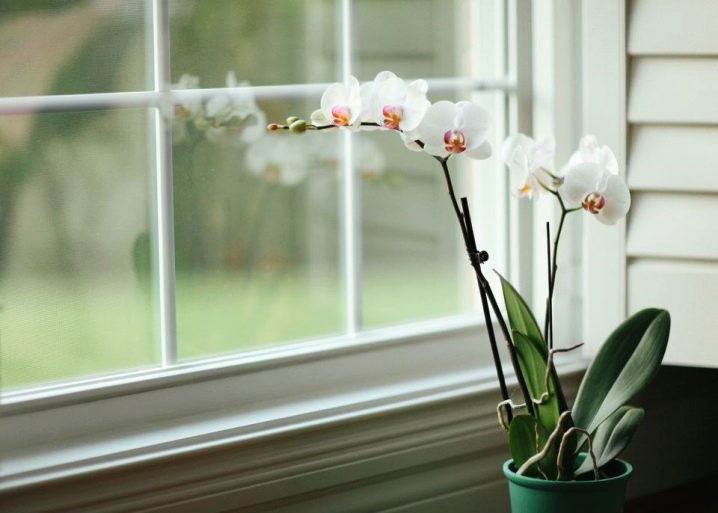
The listed facts have a significant impact on the timing of bud formation. Whether they will appear again, how many days the flowering will last - it depends only on the conditions created. If the phalaenopsis was recently bought in a store not blooming, then you should not expect an early release of flower buds. Home conditions and climate are very different from those maintained in stores and greenhouses.
After changing the microclimate, the plant will need time to adapt, which can last from several weeks to one month.
After adaptation to a new place, the flower should finally get stronger. In the summer and autumn seasons, the orchid adapts to new conditions faster than in winter. And if the plant has been growing at home for a long time, then it can bloom 2 times a year. Having released flower stalks in early or mid-autumn, phalaenopsis will delight its owners with their flowers for 3 months or more.
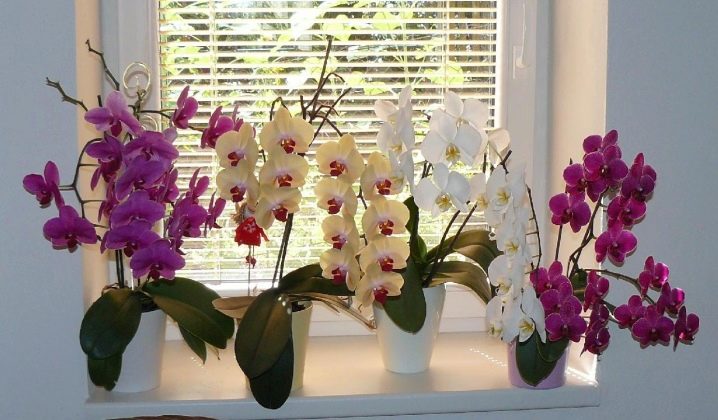
The necessary conditions
The orchid has recently been grown at home quite successfully, although for novice flower lovers, it also remains a mysterious plant that requires special attention. If in some house it grows easily, then in another it may not take root at all. The fact is that even in the same housing on different window sills there may be a different microclimate, lighting and humidity. For better orchid maintenance at home, follow these rules:
- choose the right pot;
- prepare the appropriate soil;
- decide on a place;
- take care of the temperature regime;
- organize watering properly.
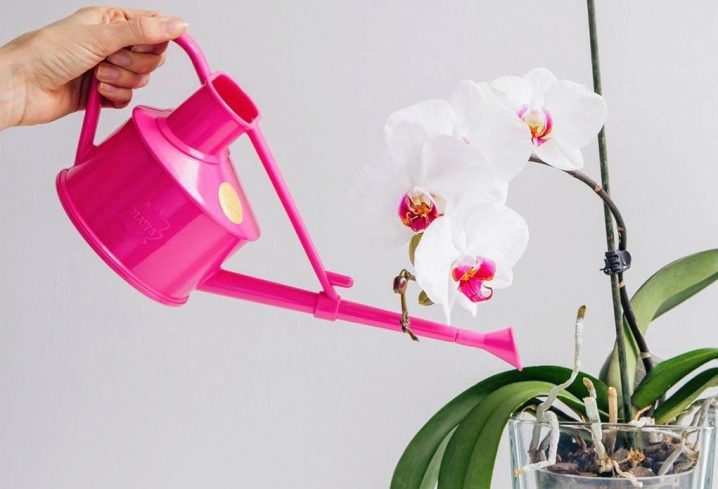
Plant pot
It should be noted that an orchid will not grow in a pot designed for regular flowers. It is necessary that daylight falls on the roots of the plant and air flows. Unlike the roots of ordinary plants, a constant process of photosynthesis takes place in the roots of exotic plants.
It is the healthy appearance of the root system that will be an indicator that the plant will not die soon.
The pot should be made of clear plastic and have holes in the bottom and sides. Such containers are now sold in any store that has a similar product. Pots can be of different shapes and sizes.The presence of small legs under them will be a great advantage - this will serve as an additional light source and will not allow water to stagnate after watering. If you wish, you can make a similar planter yourself from transparent plastic dishes, the main thing is to find a suitable size and make holes on it.
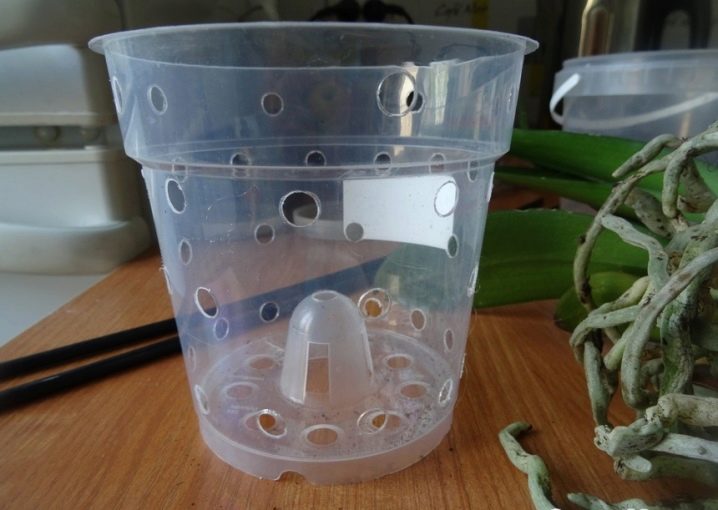
The soil
In nature, this exotic flower grows on a tree, high from the ground. Accordingly, the florist should create the most similar habitat. Ordinary earth is in no way suitable for this, since it is heavy and does not allow light and air to pass through. The mixture for the soil can be prepared by yourself, while you only need to correctly select the proportions of the components. It is worth considering what soil can be collected for ideal orchid growth. The following components can be applied to the substrate:
- deciduous forest humus;
- cones of coniferous trees;
- coal (charcoal);
- expanded clay;
- coconut fiber;
- peat;
- tree bark (preferably pine);
- polystyrene;
- marsh moss;
- vermiculite.

Important! All components are suitable for preparing the desired composition, but this does not mean at all that you need to apply everything at the same time. For different growing conditions and types of orchids, you can use several components from this list in certain proportions.
The main component is tree bark. For such soil, bark removed only from a healthy tree is suitable. It should peel off easily from the barrel. Freshly felled plants are best, as long as they are not rotten. Cones and humus can also be found easily in the forest. Buy expanded clay in a hardware store.

Vermiculite is sold in specialized retail outlets; it can be replaced with perlite. The presence of this component in the composition will give looseness, protect against various fungal diseases, and help avoid dehydration. Moss can be found in swampy areas. Before use, it must be soaked in water for 24 hours, so that during this time all parasites float to the surface. The rest of the dry additives found in the forest should be poured over with boiling water and dried thoroughly for neutralization. Based on what we managed to get ourselves, the soil for the orchid is being prepared. It is worth paying attention to two options for mixing the composition with certain proportions.
- Coal, bark, humus and peat in a ratio of 1: 1: 3: 1. This option should be used in very dry climates.
- Charcoal and bark, which are used in a ratio of 1: 5. In this option, there will be reduced humidity and good air permeability. It is more suitable for more humid rooms.

It turns out that the drier the air in the room, the more the soil should be moistened. But a properly prepared composition should dry completely in 3-4 days. The substrate should not be tamped; air should circulate inside the pot. If all the rules are followed, then the soil will lie freely in the pot, and the planted flower can be easily removed with the roots and soil. If there is no desire to puzzle over where and how to find components for the soil, then you can easily purchase a ready-made substrate for an orchid in a store. In addition, it will help eliminate proportional errors and save you time.
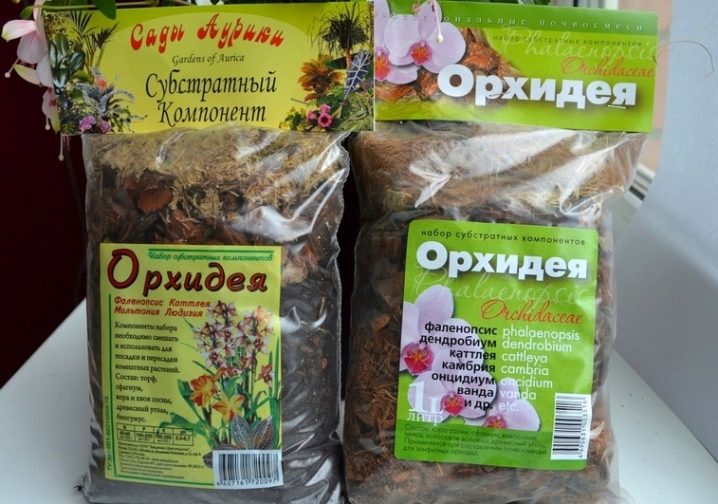
A place
One of the best places to place a plant is where side light falls on the orchid. There should be a lot of light, but it should be diffused. In no case should the plant stand in direct sunlight. If it is on the south side, then it should not be placed on the windowsill. It will be advisable to install a flower stand near the window. In winter, the houseplant weaned from the bright sun, so in the spring it needs to be shaded for a while.

Important! If the roots begin to elongate, and the leaves turn yellow and pale, then, most likely, the flower does not have enough sun.
Room temperature
The orchid loves warmth. If the room is below +15 degrees, then the orchid will not grow and bloom in full force.In such conditions, she can simply freeze. A high temperature will be more comfortable for the flower, but there are some facts to keep in mind. For example, at temperatures above +25 degrees, the orchid will begin to "give babies" in the form of small shoots on the roots. These shoots can then be transplanted into separate pots.
It is desirable for orchids to provide warmth during the daytime and a little cooler at night. Therefore, they feel great in the summer on the balcony, where the direct rays of the sun do not fall. In the fresh air, in the warm season, it just turns out to observe the correct temperature regime. If the loggia is located on the south side and the sun soars all day, then the pots of flowers can be taken out there only after sunset and left there until early morning.
Important! The orchid does not like drafts.

Watering
The orchid does not need to be watered frequently. Excess water will affect the plant even worse than the lack of watering for a long time. It is necessary to ensure that the water that gets on the leaves does not stagnate for a long time, otherwise the leaves will lose their shine and stains will appear on them. In summer, 1 watering per week is enough, in winter - once every 2 weeks. If the orchid stands next to the battery in the cold season, you need to monitor the condition of the flower, humidify the air and, possibly, water more often. In this case, you need to watch so that the water does not stagnate in the pot.
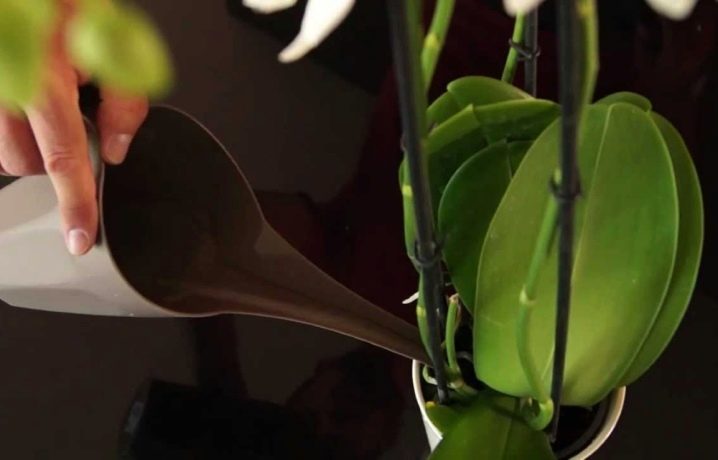
Important! The water should be at room temperature or slightly warm. If soft water flows from the tap in your home, then it can be watered after the water has been infused for 24 hours. Hard - you need to boil, and also wait until it settles.
There are such watering methods as:
- pour water along the edge of the pot - water should be abundantly, but the rest of the water should flow out through the side and bottom holes;
- spray the plant, while you need to ensure that drops do not fall on the inflorescences;
- for half an hour, lower the plant in water so that the pot is immersed in water to the brim, then, pulling out the pot, wait until all the water is drained.
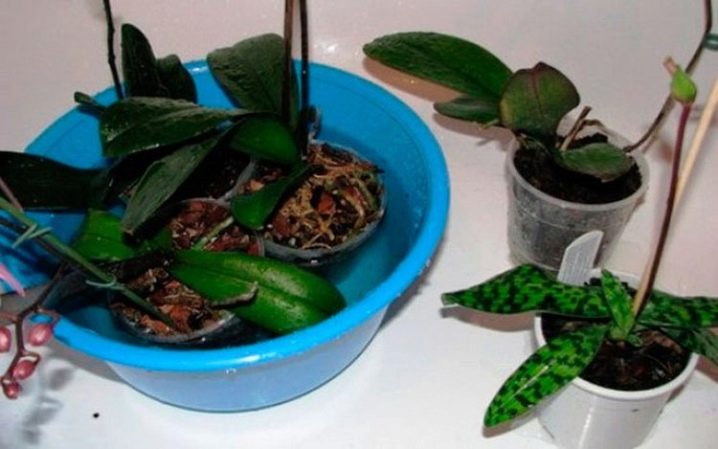
How to stimulate?
Even after fulfilling almost all of the above conditions, lovers of home plants cannot achieve a lush orchid bloom. This happens when there is an imbalance in the main requirements for care. The following tips can help the grower and improve the condition of the plants:
- to stimulate growth in the spring and summer, certain activities should be carried out, but in the autumn-winter period - completely different; in a warm and hot period, when moisture evaporates faster, watering should be increased, the plant should be sprayed;
- the best remedy during the active growth of shoots is nitrogen fertilizer, but you should not get too carried away, because the excess can lead to a chemical burn of the roots; if you do not know the exact dose, then it is better to use a smaller amount than then spend time and effort to reanimate the orchid due to an excess of nitrogen in the soil;
- in autumn and winter, watering should be reduced, in the meantime, dry the substrate completely; if the room is too warm for the formation of flower buds, you will have to lower the temperature;
- in autumn and winter, it will also be useful to organize artificial lighting in the evening; as a fertilizer, phosphorus and potassium should be used, by applying to the soil once a month.
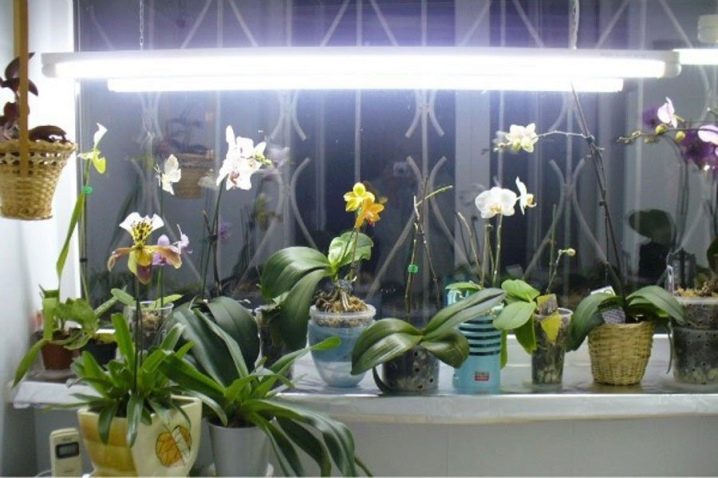
These guidelines apply to all exotic flowers. But each owner, through observation, selects his own methods of stimulating plant growth. It happens that an orchid blooms all year round, and then "falls asleep" and with all the good conditions of maintenance, it does not bloom in any way. In this case, experienced florists advise to "shock" the plant. For this, for example, you can change the place of the pot or arrange an artificial "drought" for a while. Such techniques perfectly stimulate the formation of flower buds.
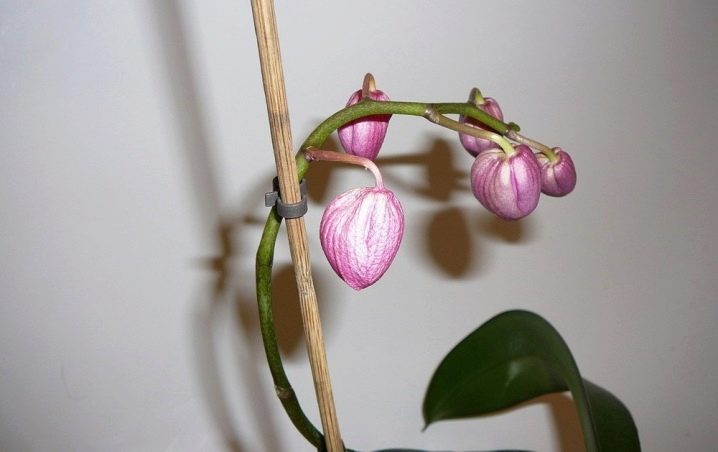
How to understand that it will bloom soon?
It is not difficult to identify signs that the orchid will soon bloom. You just need to carefully examine the stem of the plant.The buds located on it, with proper care, can develop flower stalks. Sometimes novice growers can confuse aerial roots with peduncles. The lateral processes, in contrast to the roots, are directed upward. Sometimes they can bend at the beginning of growth, but then stretch high.
It will take several months for the plant to shoot an arrow and bloom. During this time, small balls begin to appear on the upper part of the peduncle, which will increase over time. If the owner of the plant managed to create all the necessary conditions, then the orchid blooms with beautiful buds.
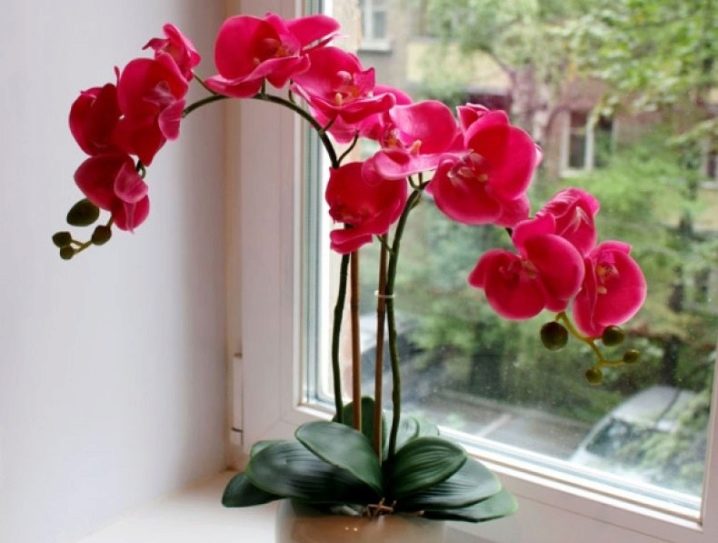
Important! During flowering, the plant should not be exposed to stressful situations, protected from extreme cold and direct sunlight.
Leaving during flowering
During the formation of the stem and flower buds on orchids it is also necessary to properly care for the plant, namely:
- you need to water the plant regularly;
- roots located above the substrate should be sprayed with warm water, because a lack of liquid can dry out the peduncle;
- the air should be humidified and refreshed more often, but a draft should not be created during ventilation;
- as soon as the flowers open, watering decreases; the flower should not be disturbed at this time.
Important! The length of flowering depends on the genetic makeup of the plant, although every experienced grower has their own tricks to prolong this process.
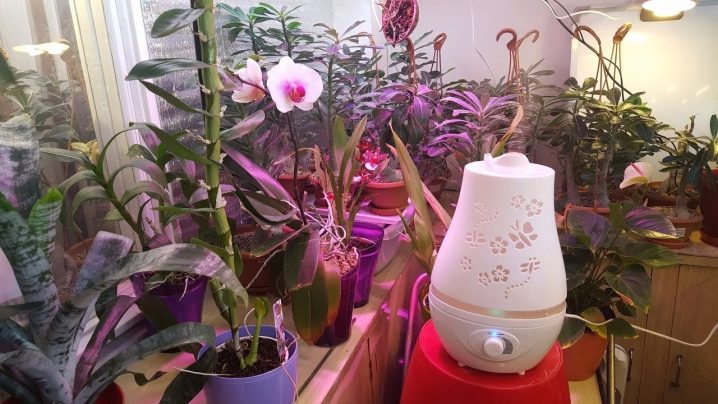
How to renew?
By changing the conditions for caring for a houseplant, you can extend the flowering period as much as possible. There are two factors with the knowledge of which you can control the duration of the flowering of orchids.
- Changes in air temperature during the day and at night. In the summer, it is enough to place the orchid on the loggia. The natural temperature difference at different times of the day will have a beneficial effect on the growth and duration of flowering. In the autumn-winter period, you need to ventilate the room well in the evening.
- Increase in daylight hours. Experienced florists are advised to organize artificial lighting for their pets, since any decrease in lighting will certainly cause negative changes in blooming beauties.
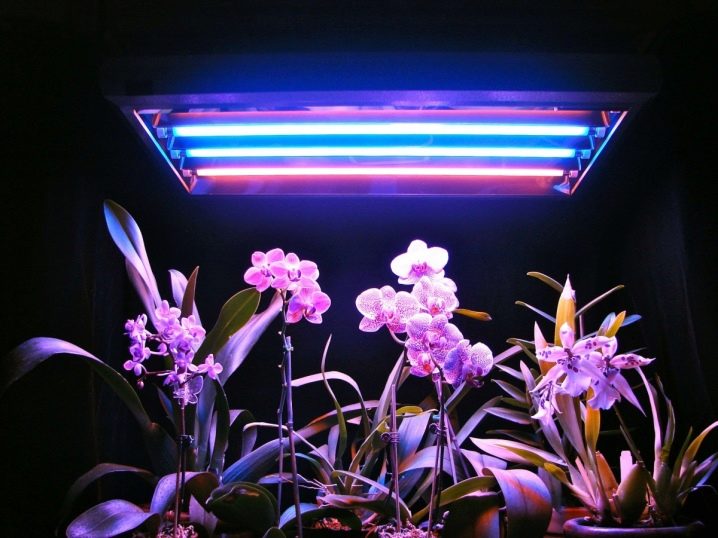
For information on how to stimulate orchid flowering, see the next video.































The comment was sent successfully.